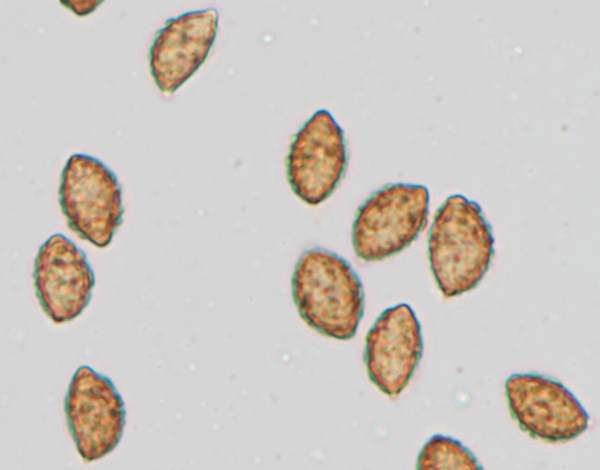Cortinarius mucifluoides Rob. Henry
Phylum: Basidiomycota - Class: Agaricomycetes - Order: Agaricales - Family: Cortinariaceae
Distribution - Taxonomic History - Etymology - Toxicity - Identification - Reference Sources
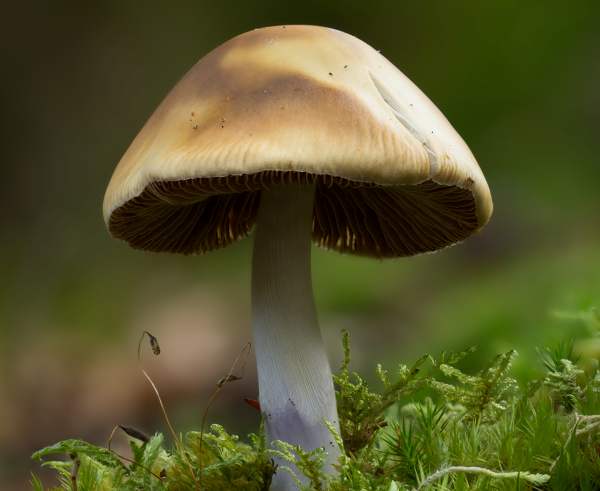
Cortinarius mucifluoides is one several viscid or slimy webcaps that are difficult to separate on macroscopic characters alone; it fruits in mixed woodland or under pines in areas where the soil is acidic. Often these webcaps grow through moss, when the stems can be unusually long.
Distribution
An uncommon species in Britain and Ireland, this webcap is found also in many parts of mainland Europe and in North America.
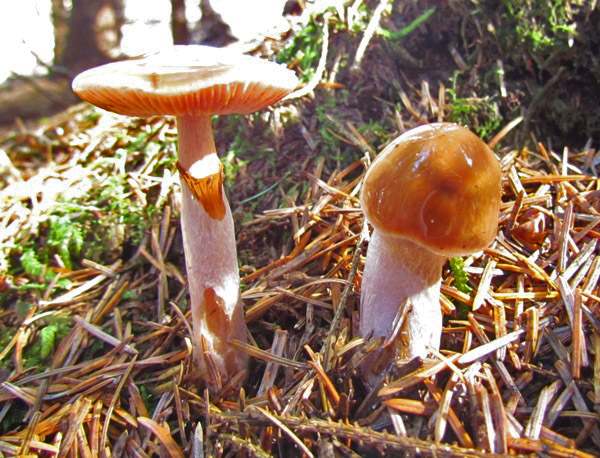
Taxonomic history
When the great Swedish mycologist Elias Magnus Fries described a mushroom very similar to this species in 1838, he gave it the binomial name Cortinarius stillatitius. Experts consider this to be a dubious identity and that species identified as matching Fries' description of C. stillatitius are more likely to be Cortinarius mucifluoides (synonym Cortinarius pseudosalar) or perhaps Cortinarius integerrimus.
Cortinarius mucifluoides was described and named by French mycologist Robert Henry in 1985, and is synonymous with Cortinarius pseudosalor sensu auct. brit., Cooke, Rea.
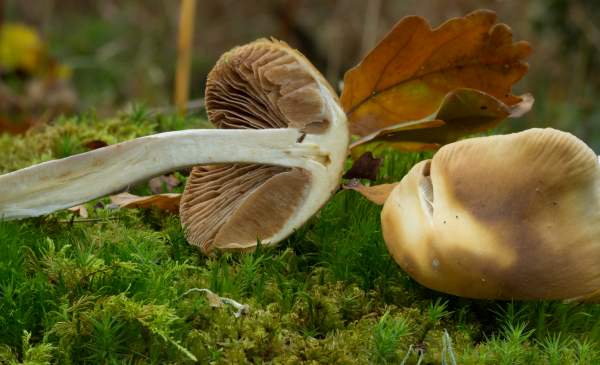
Etymology
The generic name Cortinarius is a reference to the partial veil or cortina (meaning a curtain) that covers the gills when caps are immature.
In the genus Cortinarius most species produce partial veils in the form of a fine web of radial fibres connecting the stem to the rim of the cap rather than a solid membrane.
Just as you might expect, the specific epithet mucifluoides is saying from the prefix muci- that this is a slimy webcap (sub-genus Myxacium) and from the suffix -oides that it is similar to Cortinarius mucifluus.
Toxicity
This mushroom is generally regarded as 'suspect' and may contain dangerous toxins; it should not be gathered for eating. Some reddish Cortinarius species with which the Girdled Webcap could be confused contain the toxin orellanine, which if eaten destroys human kidneys and liver.
Identification guide
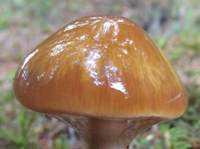 |
CapOchraceous brown with a tawny centre; smooth and shiny; viscid when wet (see left); conical, expanding to become umbonate; margin may be either smooth or faintly striate; 4 to 9cm across. |
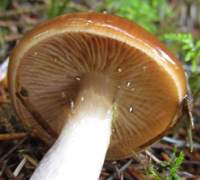 |
GillsCreamy soon becoming clay-brown then ochre-rust-brown, the gills of the Purple Stocking Webcap are free or adnate. On young caps the cortina is pale violet or almost white. |
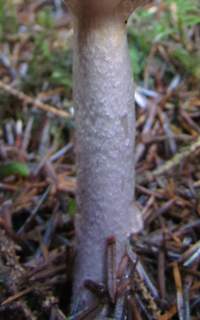 |
StemInitially white above ring zone but later stained rusty brown as spores fall from the gills, the stem of Cortinarius mucifluoides is slimy and covered in violaceous veil material below the ring zone. Stems are fairly cylindrical, sometimes slightly fusiform (swollen in the central region) but not swollen at the base, 7 to 10cm long and 1 to 2cm in diameter. |
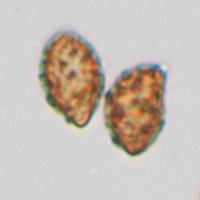 |
SporesLemon shaped, densely verrucose, 12-16 x 6.5-9μm. Spore printRusty brown. |
Odour/taste |
Odour of honey especially when cut at stem base; taste mild but not significant. |
Habitat & Ecological role |
In deciduous woodland, particularly under birches; sometimes also under conifers; usually on acidic soil. |
Season |
August to October in Britain and Ireland. |
Similar species |
Cortinarius collinitus and several other smallish slimy-capped webcaps have ochre, brown or red-brown caps, and separating them with certainty is difficult without resorting to testing chemicals and a microscope. |
Reference Sources
Fascinated by Fungi, 2nd Edition, Pat O'Reilly 2016, reprinted by Coch-y-bonddu Books in 2022.
Funga Nordica, Henning Knudsen and Jan Vesterholt, 2008.
Fungi of Switzerland Agarics, part 3: Cortinariaceae, Breitenbach, J., Kränzlin, F.
Dictionary of the Fungi; Paul M. Kirk, Paul F. Cannon, David W. Minter and J. A. Stalpers; CABI, 2008
Taxonomic history and synonym information on these pages is drawn from many sources but in particular from the British Mycological Society's GB Checklist of Fungi.
Acknowledgements
This page includes photographs kindly contributed by David Kelly.
Fascinated by Fungi. Back by popular demand, Pat O'Reilly's best-selling 450-page hardback book is available now. The latest second edition was republished with a sparkling new cover design in September 2022 by Coch-y-Bonddu Books. Full details and copies are available from the publisher's online bookshop...
